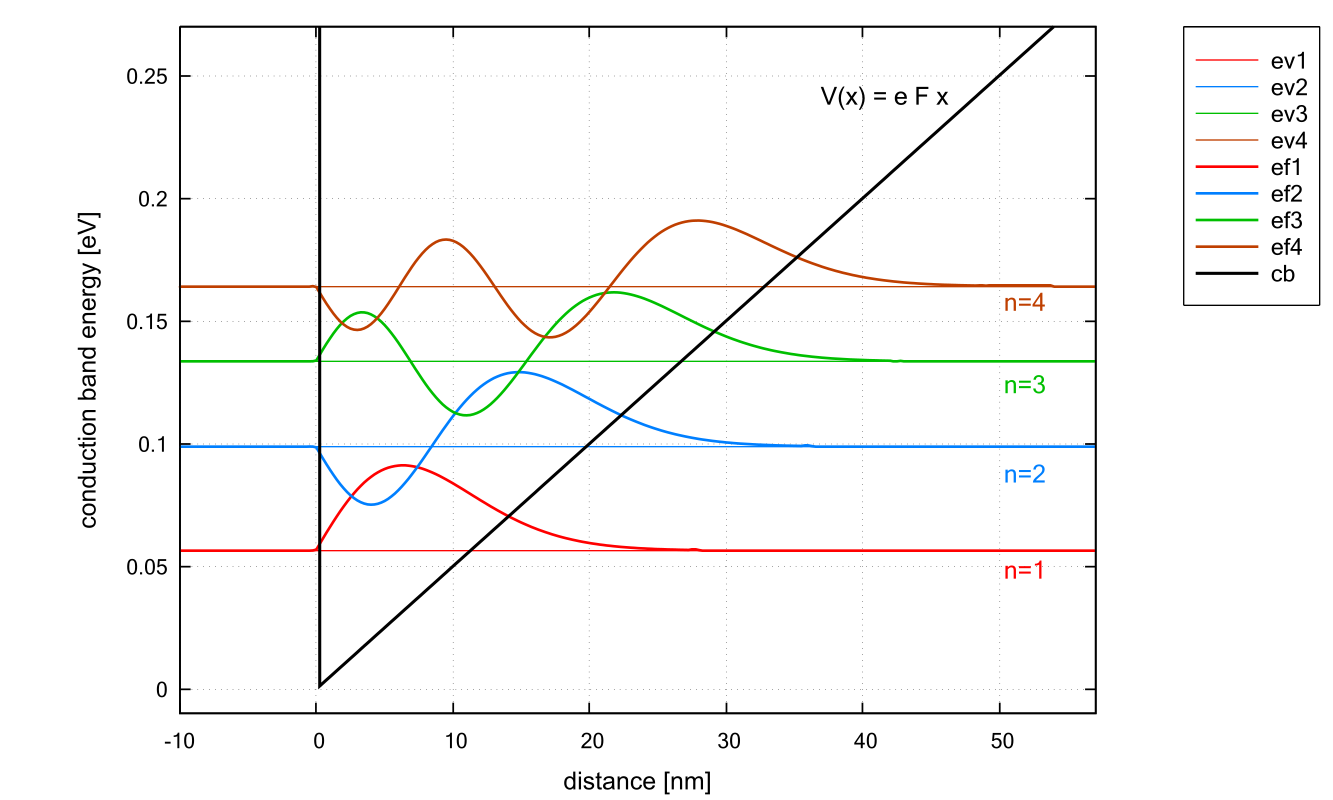Triangular well
In this tutorial we calculate the Schrödinger equation for a triangular well and compare the results with the analytic solution.
The related input files are followings:
1DGaAs_triangular_well_nn*.in
Structure
A triangular well consists of a potential with a constant slope that is bound at one side by an infinite barrier.
For
For
Comparison of nextnano++ and the analytic solution
The Schrödinger equation for the transverse component of the electronic wave function has the following form inside the well:
Usually one applies Dirichlet boundary conditions at
In our case, we apply Neumann (or Dirichlet) boundary conditions at
The Schrödinger equation can be simplified by introducing suitable new variables and thus reduces to the Stokes or Airy equation. Its solutions, the so-called Airy functions, are discussed in most textbooks, see for example:
The Physics of Low-Dimensional Semiconductors - An Introduction, John H. Davies, Cambridge University Press (1998)

The figure shows the conduction band edge (black line) which is represented by a triangular potential well
One can see that the distance between the energy levels decreases with increasing
The eigenvalues of the Airy equation can be calculated using the formula:
(The units of
The lowest eigenvalue has the value
For large
The nextnano++ and nextnano³ eigenvalues for the lowest four eigenstates are in very good agreement with the analytic results:
nextnano++ eigenvalue |
nextnano³ eigenvalue |
calculated eigenvalue |
|||
n = 1 |
0.05647 |
0.05644 |
0.05664 |
||
n = 2 |
0.09887 |
0.09882 |
0.09889 |
||
n = 3 |
0.13358 |
0.13351 |
0.13365 |
||
n = 4 |
0.16426 |
0.16416 |
0.16435 |
The triangular potential is not symmetric in
The triangular well model is useful because it can be used to approximate the (idealized) triangularlike shape near a heterojunction formed by the discontinuity of the conduction band and an electrostatic field of electrons or remote ionized impurities.
Last update: nnnn/nn/nn